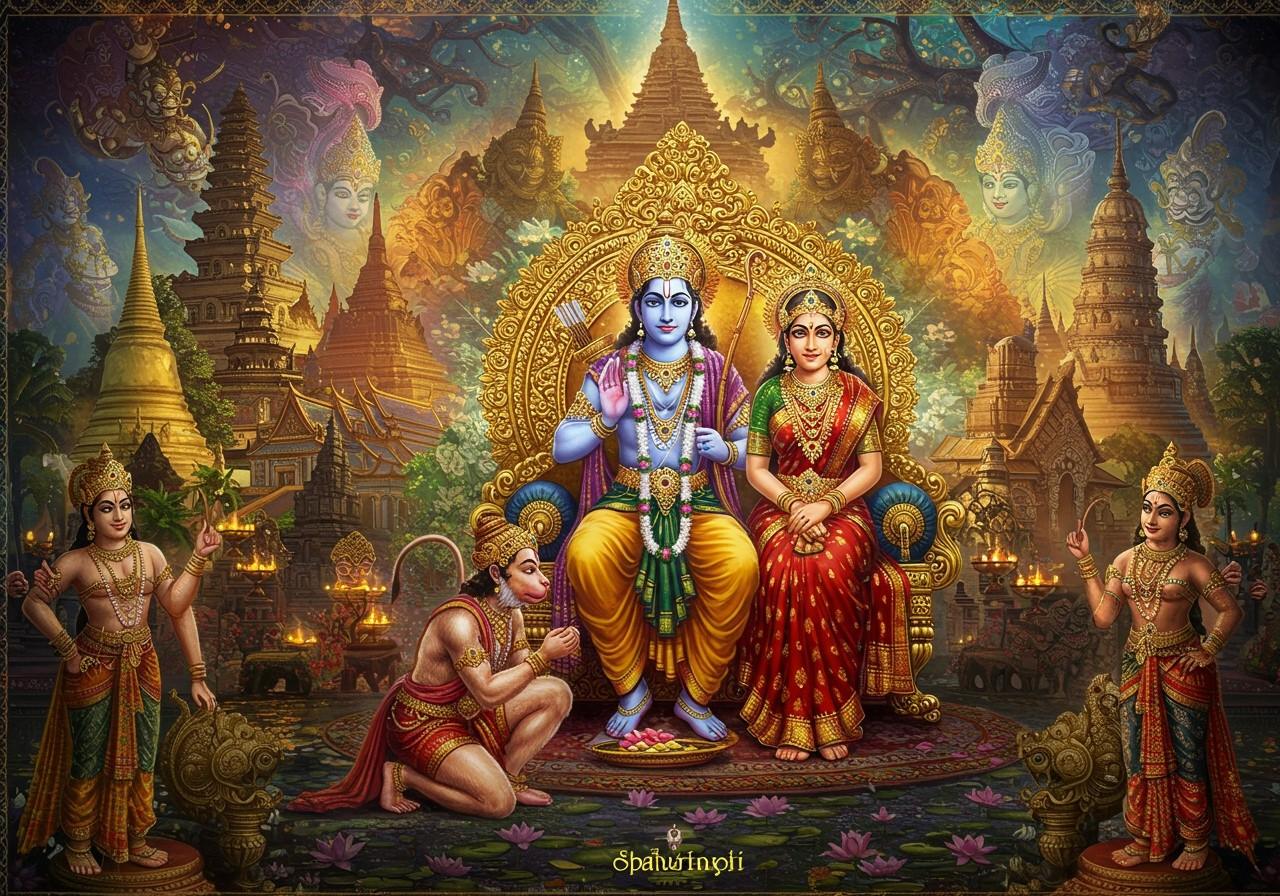
The Ramayana, an ancient Indian epic, has profoundly impacted art and culture across Southeast Asia. Its themes of dharma, devotion, and heroism have shaped various art forms, including dance, architecture, and visual arts, in countries like Indonesia, Thailand, Cambodia, Malaysia, and others. The epic’s characters and stories are fundamental to the cultural consciousness of these regions, demonstrating its enduring impact on their artistic and cultural traditions. This exploration delves into the diverse ways the Ramayana has inspired artistic expression throughout the region.
Ramayana in Visual Arts
The visual arts have been significantly influenced by the Ramayana. From ancient temple carvings to modern interpretations, the epic’s narrative and characters have provided a rich source of inspiration for artists.
Drawings and Paintings
- Indian Temple and Manuscript Drawings: Traditional drawings in Indian temples and manuscripts, often depicting scenes of Rama’s valor and Sita’s purity, showcase intricate details and symbolic representations, preserving the epic’s essence for centuries. These works are often characterized by their vibrant colors and meticulous linework.
- Thai Mural Paintings: The Ramakien, Thailand’s version of the Ramayana, is vividly depicted in mural paintings at the Grand Palace in Bangkok and other historical sites. These murals, filled with action and emotion, bring the epic’s characters to life, showcasing the narrative’s adaptation within Thai culture.
- Cambodian and Indonesian Art: Detailed bas-reliefs at Angkor Wat (Cambodia) and other temples across Indonesia reflect the Ramayana’s influence. These carvings capture dramatic moments and heroic feats, demonstrating the epic’s integration into the region’s architectural heritage. The bas-reliefs often depict scenes of battles, processions, and divine interventions.
- Modern Interpretations: Contemporary artists continue to draw inspiration from the Ramayana, using comic books, digital art, and other modern mediums to reimagine the epic for new audiences. This demonstrates the continuing relevance and adaptability of the Ramayana in the modern world.
For those seeking to connect with the divine imagery of the Ramayana, Poojn.in offers a curated selection of exquisite deities and spiritual art pieces. Explore our collection to bring the epic’s essence into your home.
Ramayana in Performing Arts
The performing arts, particularly dance and drama, have been deeply influenced by the Ramayana. Various Asian cultures have incorporated the epic’s narrative into their traditional performance styles.
Dance
- Indian Dance-Drama Forms: Classical Indian dance forms like Kathakali and Bharatanatyam frequently portray stories from the Ramayana. Dancers use expressive movements, elaborate costumes, and intricate mudras (hand gestures) to bring the epic’s characters and emotions to life.
- Thai Khon Dance: Khon, a masked dance drama from Thailand, narrates the Ramakien through elaborate costumes, stylized movements, and musical accompaniment. The performances are visually stunning, showcasing the epic’s grandeur and dramatic narrative.
- Balinese Kecak Dance: Known for its dramatic chanting and rhythmic movements, Kecak dance in Bali depicts episodes from the Ramayana. The synchronized chants and dynamic movements create a mesmerizing effect, drawing audiences into the story’s dramatic tension.
Enhance your understanding and appreciation of the Ramayana by exploring the rich resources available at Poojn.in. Our articles and curated collections offer deeper insights into the epic’s characters, themes, and cultural significance.
FAQs on The Ramayana’s Influence
What are some key examples of the Ramayana’s influence on Southeast Asian architecture? The Ramayana’s influence is evident in iconic structures like Angkor Wat in Cambodia, where bas-reliefs depict scenes from the epic. Other temples and palaces throughout Southeast Asia feature similar architectural elements inspired by the Ramayana.
How has the Ramayana impacted modern storytelling? The Ramayana continues to inspire contemporary artists and storytellers. Its themes and characters are reimagined in modern literature, film, and other media, demonstrating the epic’s enduring relevance in the modern world.
Conclusion
The Ramayana’s influence on art and culture across Asia is profound and enduring. From traditional temple carvings to contemporary digital art, the epic continues to inspire and connect people. Its stories are brought to life through intricate paintings, captivating dance performances, and imaginative modern interpretations. By understanding and appreciating the Ramayana’s impact, we honor our shared cultural heritage and ensure its legacy for future generations. Embracing these artistic traditions fosters a deeper connection to our roots while celebrating the rich diversity of Asian cultures. Find authentic puja items and deepen your understanding of the Ramayana at Poojn.in.


